Restoration of mitophagy ameliorates cardiomyopathy in Barth syndrome
- PMID: 34985382
- PMCID: PMC9466615
- DOI: 10.1080/15548627.2021.2020979
Restoration of mitophagy ameliorates cardiomyopathy in Barth syndrome
Abstract
Barth syndrome (BTHS) is an X-linked genetic disorder caused by mutations in the TAFAZZIN/Taz gene which encodes a transacylase required for cardiolipin remodeling. Cardiolipin is a mitochondrial signature phospholipid that plays a pivotal role in maintaining mitochondrial membrane structure, respiration, mtDNA biogenesis, and mitophagy. Mutations in the TAFAZZIN gene deplete mature cardiolipin, leading to mitochondrial dysfunction, dilated cardiomyopathy, and premature death in BTHS patients. Currently, there is no effective treatment for this debilitating condition. In this study, we showed that TAFAZZIN deficiency caused hyperactivation of MTORC1 signaling and defective mitophagy, leading to accumulation of autophagic vacuoles and dysfunctional mitochondria in the heart of Tafazzin knockdown mice, a rodent model of BTHS. Consequently, treatment of TAFAZZIN knockdown mice with rapamycin, a potent inhibitor of MTORC1, not only restored mitophagy, but also mitigated mitochondrial dysfunction and dilated cardiomyopathy. Taken together, these findings identify MTORC1 as a novel therapeutic target for BTHS, suggesting that pharmacological restoration of mitophagy may provide a novel treatment for BTHS.Abbreviations: BTHS: Barth syndrome; CCCP: carbonyl cyanide 3-chlorophenylhydrazone; CL: cardiolipin; EIF4EBP1/4E-BP1: eukaryotic translation initiation factor 4E binding protein 1; GAPDH: glyceraldehyde-3-phosphate dehydrogenase; KD: knockdown; KO: knockout; LAMP1: lysosomal-associated membrane protein 1; LV: left ventricle; MAP1LC3/LC3: microtubule-associated protein 1 light chain 3; MEFs: mouse embryonic fibroblasts; MTORC1: mechanistic target of rapamycin kinase complex 1; OCR: oxygen consumption rate; PE: phosphatidylethanolamine; PIK3C3/VPS34: phosphatidylinositol 3-kinase catalytic subunit type 3; PINK1: PTEN induced putative kinase 1; PRKN/Parkin: parkin RBR E3 ubiquitin protein ligase; qRT-PCR: quantitative real-time polymerase chain reaction; RPS6KB/S6K: ribosomal protein S6 kinase beta; SQSTM1/p62: sequestosome 1; TLCL: tetralinoleoyl cardiolipin; WT: wild-type.
Keywords: BTHS; MTORC1; TAFAZZIN; cardiolipin; mitophagy; rapamycin.
Conflict of interest statement
No potential conflict of interest was reported by the author(s).
Figures
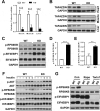
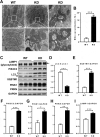
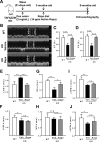
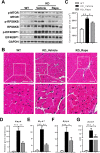

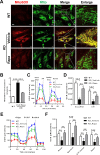

Similar articles
-
Cardiolipin remodeling by TAZ/tafazzin is selectively required for the initiation of mitophagy.Autophagy. 2015 Apr 3;11(4):643-52. doi: 10.1080/15548627.2015.1023984. Autophagy. 2015. PMID: 25919711 Free PMC article.
-
Tafazzin Mutation Affecting Cardiolipin Leads to Increased Mitochondrial Superoxide Anions and Mitophagy Inhibition in Barth Syndrome.Cells. 2020 Oct 21;9(10):2333. doi: 10.3390/cells9102333. Cells. 2020. PMID: 33096711 Free PMC article.
-
Aberrant mitochondrial morphology and function associated with impaired mitophagy and DNM1L-MAPK/ERK signaling are found in aged mutant Parkinsonian LRRK2R1441G mice.Autophagy. 2021 Oct;17(10):3196-3220. doi: 10.1080/15548627.2020.1850008. Epub 2020 Dec 10. Autophagy. 2021. PMID: 33300446 Free PMC article.
-
Barth syndrome cardiomyopathy: targeting the mitochondria with elamipretide.Heart Fail Rev. 2021 Mar;26(2):237-253. doi: 10.1007/s10741-020-10031-3. Epub 2020 Oct 1. Heart Fail Rev. 2021. PMID: 33001359 Free PMC article. Review.
-
Barth Syndrome Cardiomyopathy: An Update.Genes (Basel). 2022 Apr 8;13(4):656. doi: 10.3390/genes13040656. Genes (Basel). 2022. PMID: 35456462 Free PMC article. Review.
Cited by
-
Barth Syndrome: TAFAZZIN Gene, Cardiologic Aspects, and Mitochondrial Studies-A Comprehensive Narrative Review.Genes (Basel). 2025 Apr 18;16(4):465. doi: 10.3390/genes16040465. Genes (Basel). 2025. PMID: 40282425 Free PMC article. Review.
-
Activation of the integrated stress response rewires cardiac metabolism in Barth syndrome.Basic Res Cardiol. 2023 Nov 6;118(1):47. doi: 10.1007/s00395-023-01017-x. Basic Res Cardiol. 2023. PMID: 37930434 Free PMC article.
-
Allogenic mitochondria transfer improves cardiac function in iPS-cell-differentiated cardiomyocytes of a patient with Barth syndrome.Exp Mol Med. 2025 Jun;57(6):1260-1271. doi: 10.1038/s12276-025-01472-7. Epub 2025 Jun 24. Exp Mol Med. 2025. PMID: 40555742 Free PMC article.
-
Mitochondrial Dysfunctions: Genetic and Cellular Implications Revealed by Various Model Organisms.Genes (Basel). 2024 Sep 1;15(9):1153. doi: 10.3390/genes15091153. Genes (Basel). 2024. PMID: 39336744 Free PMC article. Review.
-
VPS34 Governs Oocyte Developmental Competence by Regulating Mito/Autophagy: A Novel Insight into the Significance of RAB7 Activity and Its Subcellular Location.Adv Sci (Weinh). 2024 Nov;11(41):e2308823. doi: 10.1002/advs.202308823. Epub 2024 Sep 17. Adv Sci (Weinh). 2024. PMID: 39287146 Free PMC article.
References
-
- Barth PG, Scholte HR, Berden JA, et al. An X-linked mitochondrial disease affecting cardiac muscle, skeletal muscle and neutrophil leucocytes. J Neurol Sci. 1983. Dec;62(1–3):327–355. - PubMed
-
- Xu Y, Malhotra A, Ren M, et al. The enzymatic function of tafazzin. J Biol Chem. 2006 Dec 22;281(51):39217–39224. - PubMed
Publication types
MeSH terms
Substances
Grants and funding
LinkOut - more resources
Full Text Sources
Other Literature Sources
Medical
Research Materials
Miscellaneous
